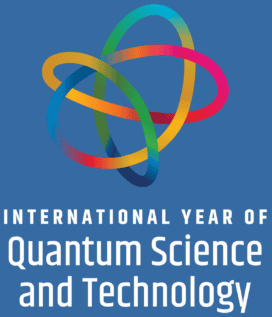Homes and cities around the world are this week celebrating Diwali or Deepavali – the Indian “festival of lights”. For Indian physicist Rupamanjari Ghosh, who is the former vice chancellor of Shiv Nadar University Delhi-NCR, this festival sheds light on the quantum world. Known for her work on nonlinear optics and entangled photons, Ghosh finds a deep resonance between the symbolism of Diwali and the ongoing revolution in quantum science.
“Diwali comes from Deepavali, meaning a ‘row of lights’. It marks the triumph of light over dark; good over evil; and knowledge over ignorance,” Ghosh explains. “In science too, every discovery is a Diwali – a victory of knowledge over ignorance.”
With 2025 being marked by the International Year of Quantum Science and Technology, a victory of knowledge over ignorance couldn’t ring truer. “It has taken us a hundred years since the birth of quantum mechanics to arrive at this point, where quantum technologies are poised to transform our lives,” says Ghosh.
Ghosh has another reason to celebrate, having been named as this year’s Institute of Physics (IOP) Homi Bhabha lecturer. The IOP and the Indian Physical Association (IPA) jointly host the Homi Bhabha and Cockcroft Walton bilateral exchange of lecturers. Running since 1998, these international programmes aim to promote dialogue on global challenges through physics and provide physicists with invaluable opportunities for global exposure and professional growth. Ghosh’s online lecture, entitled “Illuminating quantum frontiers: from photons to emerging technologies”, will be aired at 3 p.m. GMT on Wednesday 22 October.
From quantum twins to quantum networks
Ghosh’s career in physics took off in the mid-1980s, when she and American physicist Leonard Mandel – who is often referred to as one of the founding fathers of quantum optics – demonstrated a new quantum source of twin photons through spontaneous parametric down-conversion: a process where a high-energy photon splits into two lower-energy, correlated photons (Phys. Rev. A 34 3962).
“Before that,” she recalls, “no-one was looking for quantum effects in this nonlinear optical process. The correlations between the photons defied classical explanation. It was an elegant early verification of quantum nonlocality.”
Those entangled photon pairs are now the building blocks of quantum communication and computation. “We’re living through another Diwali of light,” she says, “where theoretical understanding and experimental innovation illuminate each other.”
Entangled light
During Diwali, lamps unite households in a shimmering network of connection, and so too does entanglement of photons. “Quantum entanglement reminds us that connection transcends locality,” Ghosh says. “In the same way, the lights of Diwali connect us across borders and cultures through shared histories.”
Her own research extends that metaphor further. Ghosh’s team has worked on mapping quantum states of light onto collective atomic excitations. These “slow-light” techniques – using electromagnetically induced transparency or Raman interactions – allow photons to be stored and retrieved, forming the backbone of long-distance quantum communication (Opt. Lett. 36 1551).
“Symbolically,” she adds, “it’s like passing the flame from one diya (lamp) to another. We’re not just spreading light – we’re preserving, encoding and transmitting it. Success comes through connection and collaboration.”

The dark side of light
Ghosh is quick to note that in quantum physics, “darkness” is far from empty. “In quantum optics, even the vacuum is rich – with fluctuations that are essential to our understanding of the universe.”
Her group studies the transition from quantum to classical systems, using techniques such as error correction, shielding and coherence-preserving materials. “Decoherence – the loss of quantum behaviour through environmental interaction – is a constant threat. To build reliable quantum technologies, we must engineer around this fragility,” Ghosh explains.
There are also human-engineered shadows: some weaknesses in quantum communication devices aren’t due to the science itself – they come from mistakes or flaws in how humans built them. Hackers can exploit these “side channels” to get around security. “Security,” she warns, “is only as strong as the weakest engineering link.”
Beyond the lab, Ghosh finds poetic meaning in these challenges. “Decoherence isn’t just a technical problem – it helps us understand the arrows of time, why the universe evolves irreversibly. The dark side has its own lessons.”
Lighting every corner
For Ghosh, Diwali’s illumination is also a call for inclusivity in science. “No corner should remain dark,” she says. “Science thrives on diversity. Diverse teams ask broader questions and imagine richer answers. It’s not just morally right – it’s good for science.”
She argues that equity is not sameness but recognition of uniqueness. “Innovation doesn’t come from conformity. Gender diversity, for example, brings varied cognitive and collaborative styles – essential in a field like quantum science, where intuition is constantly stretched.”
The shadows she worries most about are not in the lab, but in academia itself. “Unconscious biases in mentorship or gatekeeping in opportunity can accumulate to limit visibility. Institutions must name and dismantle these hidden shadows through structural and cultural change.”
Her vision of inclusion extends beyond gender. “We shouldn’t think of work and life as opposing realms to ‘balance’,” she says. “It’s about creating harmony among all dimensions of life – work, family, learning, rejuvenation. That’s where true brilliance comes from.”
As the rows of diyas are lit this Diwali, Ghosh’s reflections remind us that light – whether classical or quantum – is both a physical and moral force: it connects, illuminates and endures. “Each advance in quantum science,” she concludes, “is another step in the age-old journey from darkness to light.”
This article forms part of Physics World‘s contribution to the 2025 International Year of Quantum Science and Technology (IYQ), which aims to raise global awareness of quantum physics and its applications.
Stayed tuned to Physics World and our international partners throughout the year for more coverage of the IYQ.
The post Illuminating quantum worlds: a Diwali conversation with Rupamanjari Ghosh appeared first on Physics World.


